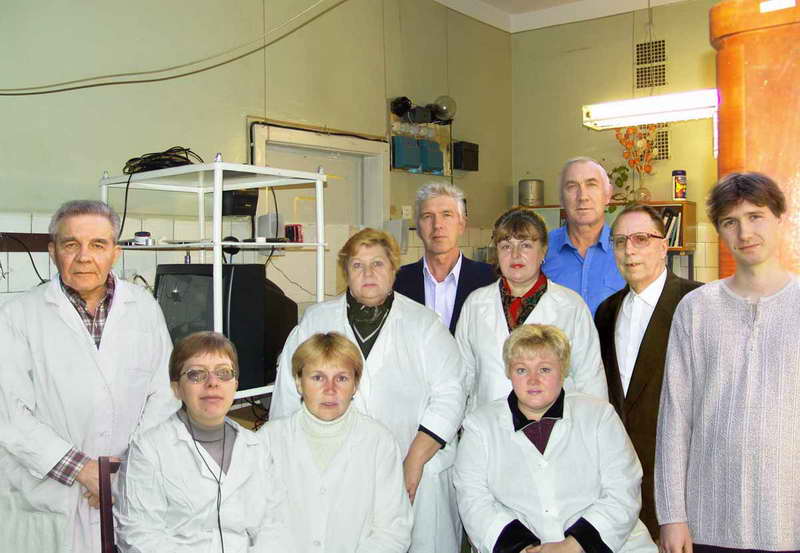The Group was formed from Laboratory of physiology of thermoregulation and bioenergetics founded in 1963 and headed by Prof. K. P. Ivanov. The main directions of investigations at the Laboratory (then of the Group) is study of principles of biological energy exchange, of mechanisms of regulation of thermoproduction processes in tissues of homoiothermal organisms, physiological mechanisms of regulation of the temperature homeostasis in human and homoiothermal animals, physiological regulation of transport of oxygen and energy carriers in the organism to provide the tissue energy exchange, thermoregulation and energy exchange in extreme situations as well as development of physiological ways of restoration of functions during the energetic insufficiency in the organism.
 In 19651975, together with Institute of Physiology of the Siberian Branch of the Russian Academy of Sciences (Novosibirsk) there was established principal importance of efficiency coefficient (EC) of various kinds of biological work for energy exchange of homoiothermal animals and human. Facts were established of constant physiological EC regulation, limits of physiological EC changes, physiological and biochemical mechanisms of regulated EC changes. At present, EC is the key parameter for analysis of living tissue energetics during an increase of the organism needs in free energy or in thermoproduction in norm and under various extreme conditions. In 19752000, investigations were carried out of nervous and humoral mechanisms of regulation of temperature homeostasis in human and in homoiothermal animals in norm and under various extreme conditions. For this purpose, various methods of neurological and thermophysical studies of the thermoregulation were used. Based on many-year studies, the previously unknown physiological mechanisms were discovered which were able to detect and to measure fluctuations of such complex thermophysical parameter as the body thermocontent. Based on the obtained quantitative data, a new theory of thermoregulation was formulated, according to which, in contrast to obsolete concepts, the temperature homeostasis is regulated not by temperature of individual body pints, but by the body thermocontent. Such principle of thermoregulation allows fixing changes of the thermostat in each body region, which increases the precision of maintenance of the human temperature homeostasis by the mean body temperature up to one tenth o C, this can become the basis for development of the most perfect thermoprotective suits for astronauts, aquanauts, mountain rescuers, etc. In 19651975, together with Institute of Physiology of the Siberian Branch of the Russian Academy of Sciences (Novosibirsk) there was established principal importance of efficiency coefficient (EC) of various kinds of biological work for energy exchange of homoiothermal animals and human. Facts were established of constant physiological EC regulation, limits of physiological EC changes, physiological and biochemical mechanisms of regulated EC changes. At present, EC is the key parameter for analysis of living tissue energetics during an increase of the organism needs in free energy or in thermoproduction in norm and under various extreme conditions. In 19752000, investigations were carried out of nervous and humoral mechanisms of regulation of temperature homeostasis in human and in homoiothermal animals in norm and under various extreme conditions. For this purpose, various methods of neurological and thermophysical studies of the thermoregulation were used. Based on many-year studies, the previously unknown physiological mechanisms were discovered which were able to detect and to measure fluctuations of such complex thermophysical parameter as the body thermocontent. Based on the obtained quantitative data, a new theory of thermoregulation was formulated, according to which, in contrast to obsolete concepts, the temperature homeostasis is regulated not by temperature of individual body pints, but by the body thermocontent. Such principle of thermoregulation allows fixing changes of the thermostat in each body region, which increases the precision of maintenance of the human temperature homeostasis by the mean body temperature up to one tenth o C, this can become the basis for development of the most perfect thermoprotective suits for astronauts, aquanauts, mountain rescuers, etc.
Besides, in 19802000, structure and function of systems of tissue energy supply with energy carriers and oxygen were studied. By the direct šĪ2 measurements in brain and muscle microvessels with oxygen microelectrodes, there was disproved the almost 100-year long A. Krogh's paradigm about the exclusive role of capillaries in gas exchange between blood and tissues. It was shown that the brain and muscle tissue cells obtained about a half of oxygen from blood across the walls of arterioles and venules. These facts have essentially changed the formed concept of mechanisms of oxygen transport and introduced significant correctives in development of ways of the organism protection from oxygen deficit or from an elevated oxygen pressure in the environment.
In 19952004 the most important achievement is development of a new method of reanimation of an overcooled organism without warming; at present this method is ready for use in medicine. |